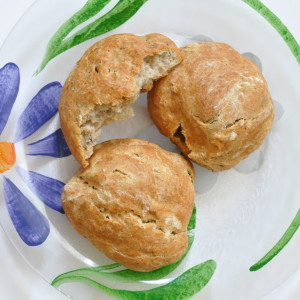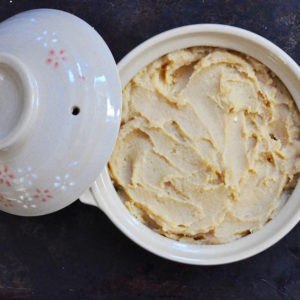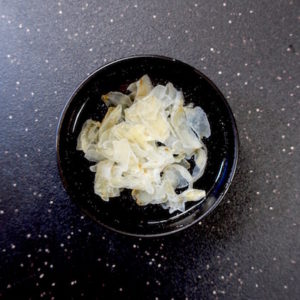Sourdough Starter
 Last week, while researching an as-yet-unwritten book review, I consulted Sandor Katz’s Wild Fermentation for information on miso. Within moments I’d veered off topic, reading instead about sourdough starters. Cultivating sourdough is much easier than making homemade miso. So easy, in fact, that I felt moved to begin one immediately.
Last week, while researching an as-yet-unwritten book review, I consulted Sandor Katz’s Wild Fermentation for information on miso. Within moments I’d veered off topic, reading instead about sourdough starters. Cultivating sourdough is much easier than making homemade miso. So easy, in fact, that I felt moved to begin one immediately.
This wasn’t my first foray into sourdough. Ten years ago, I took a bread baking class taught by Jessica Prentice. Jessica, a local chef, teacher, and author, is an adherent of Weston Price’s Wise Food Ways, a nutritional path advocating consumption of probiotic, naturally fermented foods, pastured animal fats, and sprouted grains. Jessica’s book, Full Moon Feast, is far more than a cookbook: it’s a month-by-month consideration of traditional foods and foodways, a deeply thoughtful consideration of society and culture. It isn’t the least bit preachy, pedantic, or political; rather, it is thoughtful, generous, and deeply kind. I highly recommend it.
Jessica concluded the class by sharing out pieces of her sourdough starter. During the short time I kept my bit of starter alive, I baked lots of scones using Jessica’s recipe. Everyone loved them. Then working life overwhelmed me. Tipping a tablespoon of flour into the sourdough jar once weekly became too much. The sourdough grew acidic, then blackened and died. To this day I remain deeply embarrassed about letting that sourdough die. Yes, people commit more heinous acts. But Jessica’s sourdough is highly pedigreed, given to her by the French baker who taught her bread baking. It was a serious, irreplaceable gift.
Fast forward a decade. My health suns itself on a private beach, drinking top shelf margaritas, sending occasional mocking postcards. Wish you were here!
Then why don’t your postcards have return addresses? Never mind. Ill health offers peculiar compensations, like the time to fuss over sourdough starters. The rewards are many, for in addition to its compelling flavor profile, sourdough breads offer significant health benefits. In this time of carbo-terror, let it be known that long-fermented breads have a lower glycemic index than their white-flour counterparts, staving off blood-sugar spikes. The complex carbohydrates in sourdough breads keep you sated longer. Finally, as Jessica Prentice notes in Full Moon Feast, the practice of sprouting grains in a wet, acidic environment–like a sourdough starter–helps render them more digestible.
(Thanks to Diana Henry’s A Change Of Appetite for some of the above information.)
Sandor Katz assures us that starting a sourdough ferment is a simple business, a matter of stirring up some flour and water and allowing it sit on the counter. Should you happen to have some organic fruit lying around, like grapes or plums, he suggests tossing them in.That powdery bloom on the fruit’s skin? Natural yeast.
After stirring this concoction for three or four days,
“The yeast will reveal itself,” he writes.
Lo, to my amazement, it did. Day one: a jar of flour,water, and a couple pluots. Day four: real sourdough starter.

For today, let’s discuss getting the starter going. Then we’ll talk about what to do with it.
Sourdough Starter, with invaluable guidance from Sandor Katz’s Wild Fermentation
2 cups flour: all-purpose, or rye, or wheat or a combination
2 cups filtered water
Optional: organic thin-skinned fruit: a few grapes, or 2 plums, or 2 pluots, or 2 pears. The fruit must have edible skin
Stir ingredients together in a clean jar or container. You can use a glass jar or anything suitable; I used a beanpot.
Add fruit, if using.
Place jar on your counter at warm room temperature. Cover with cheesecloth or other breathable material.
Stir the starter daily. After 3-5 days you should see bubbles rising. The batter should smell pleasantly sour. If there’s no action, you can add a teaspoon of regular active dry yeast and/or move the jar to a warmer spot. Conversely, if you see mold, or it smells foul, throw it out.
Once the sourdough starter is active, remove the fruit, if used. Now begin feeding your starter with two tablespoons of flour daily. This can be any flour you have: all-purpose, wheat, rye, polenta, whatever.
Feed starter 3-4 days. It should thicken and begin bubbling vigorously. It may also separate and look frankly unappetizing. Don’t be alarmed. Just stir it up. Once it’s thickened to a pasty consistency, it’s ready to use. At this point, you can put the lid on and refrigerate it, feeding it once weekly.
Not too pretty. But lively.

Notes: I began my sourdough starter with 1 cup all-purpose flour and 1 cup rye flour.
Using filtered water is critical to your sourdough starter’s success. Tap water is chlorinated. Chlorine kills the yeasts we’re trying to cultivate.





